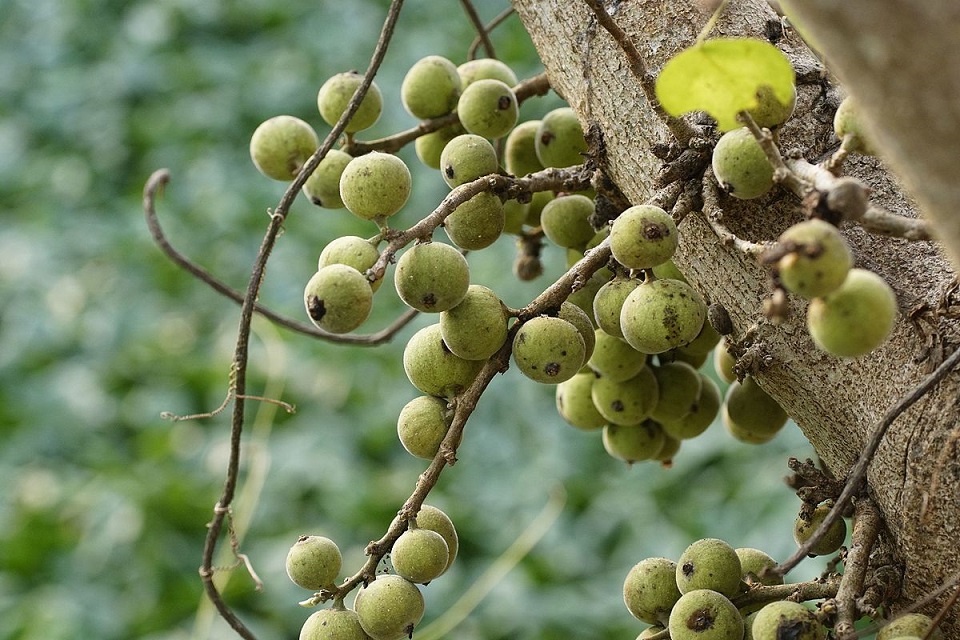| Native to India |
Fig trees have a unique form of fertilization, each species relying on a single, highly specialized species of wasp that is itself totally dependent upon that fig species in order to breed. The trees produce three types of flower; male, a long-styled female and a short-styled female flower, often called the gall flower. All three types of flower are contained within the Structure we usually think of as the fruit. The female fig wasp enters a fig and lays its eggs on the short styled female flowers while pollinating the long styled female flowers. Wingless male fig wasps emerge first, inseminate the emerging females and then bore exit tunnels out of the fig for the winged females.
Females emerge, collect pollen from the male flowers and fly off in search of figs whose female flowers are receptive.
It is a popular medicinal plant in India, which has long been used in Ayurveda, the ancient system of Indian medicine, for various diseases/disorders including diabetes, liver disorders, diarrhoea, inflammatory conditions, haemorrhoids, respiratory, and urinary diseases. Bark of the plant cures dysentery, spongy gums, ulcers, diabetes, asthma, leucorrhoea and urinary problems. The bark is rubbed on a stone with water to make a paste, which can be applied to boils or mosquito bites. |
